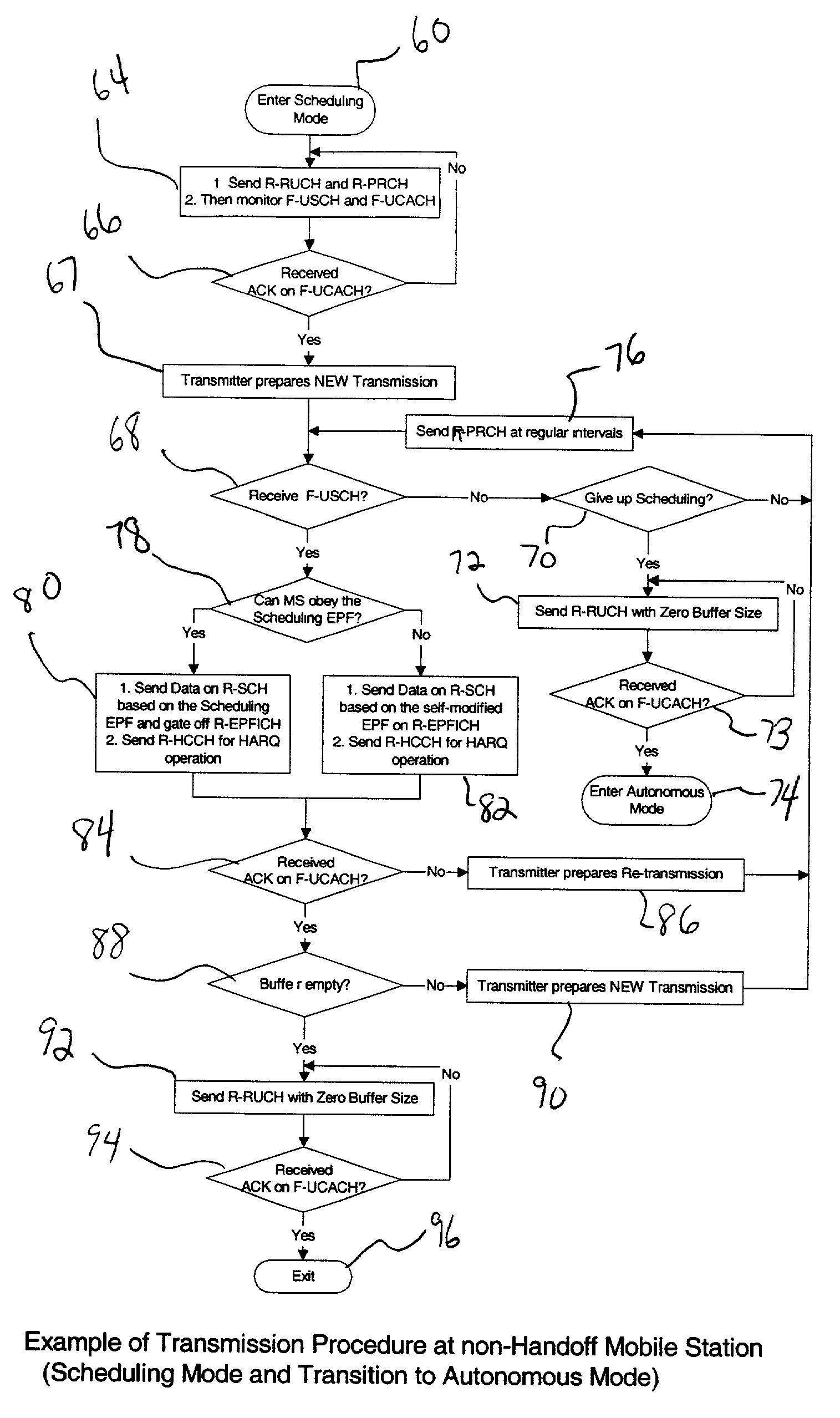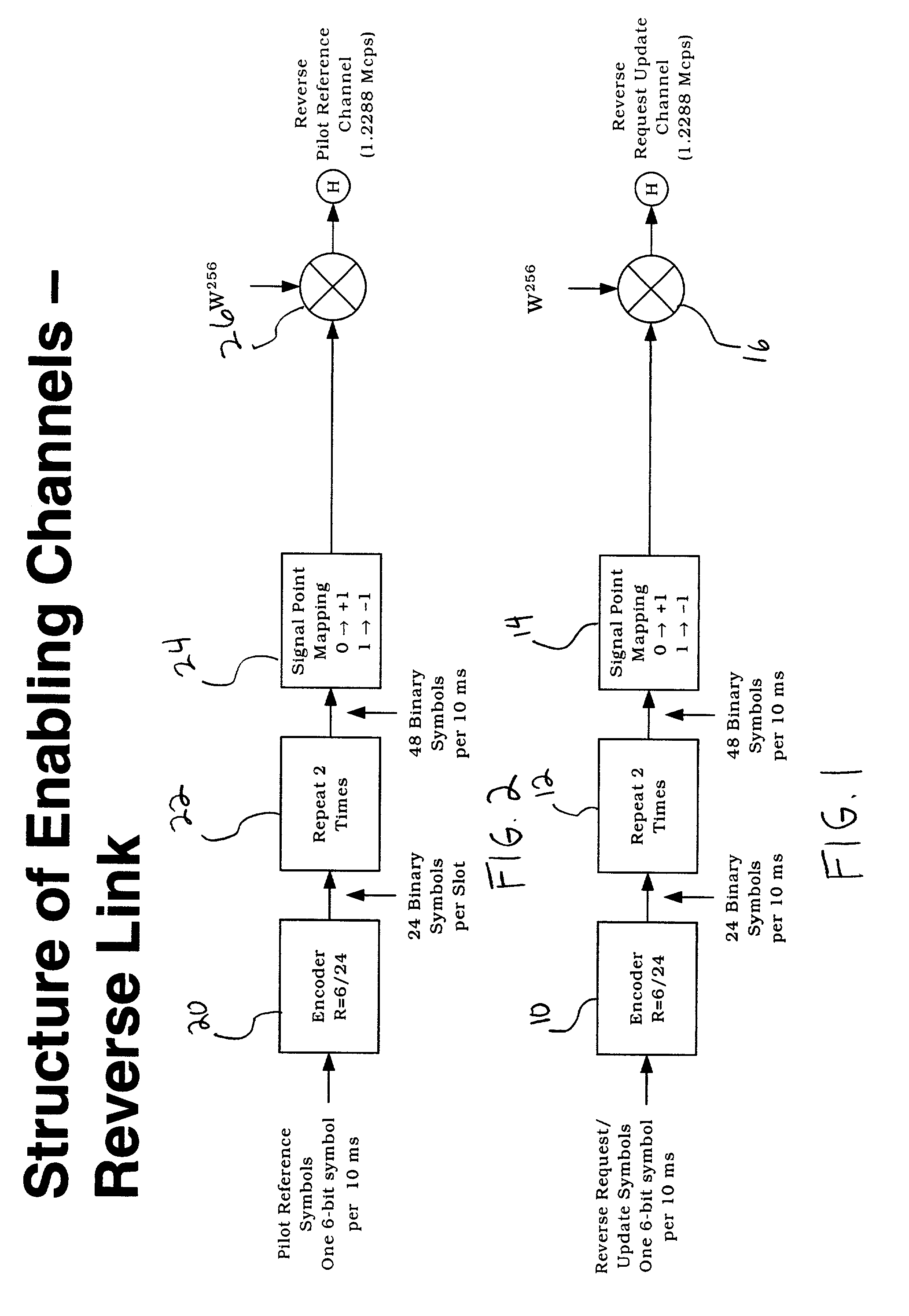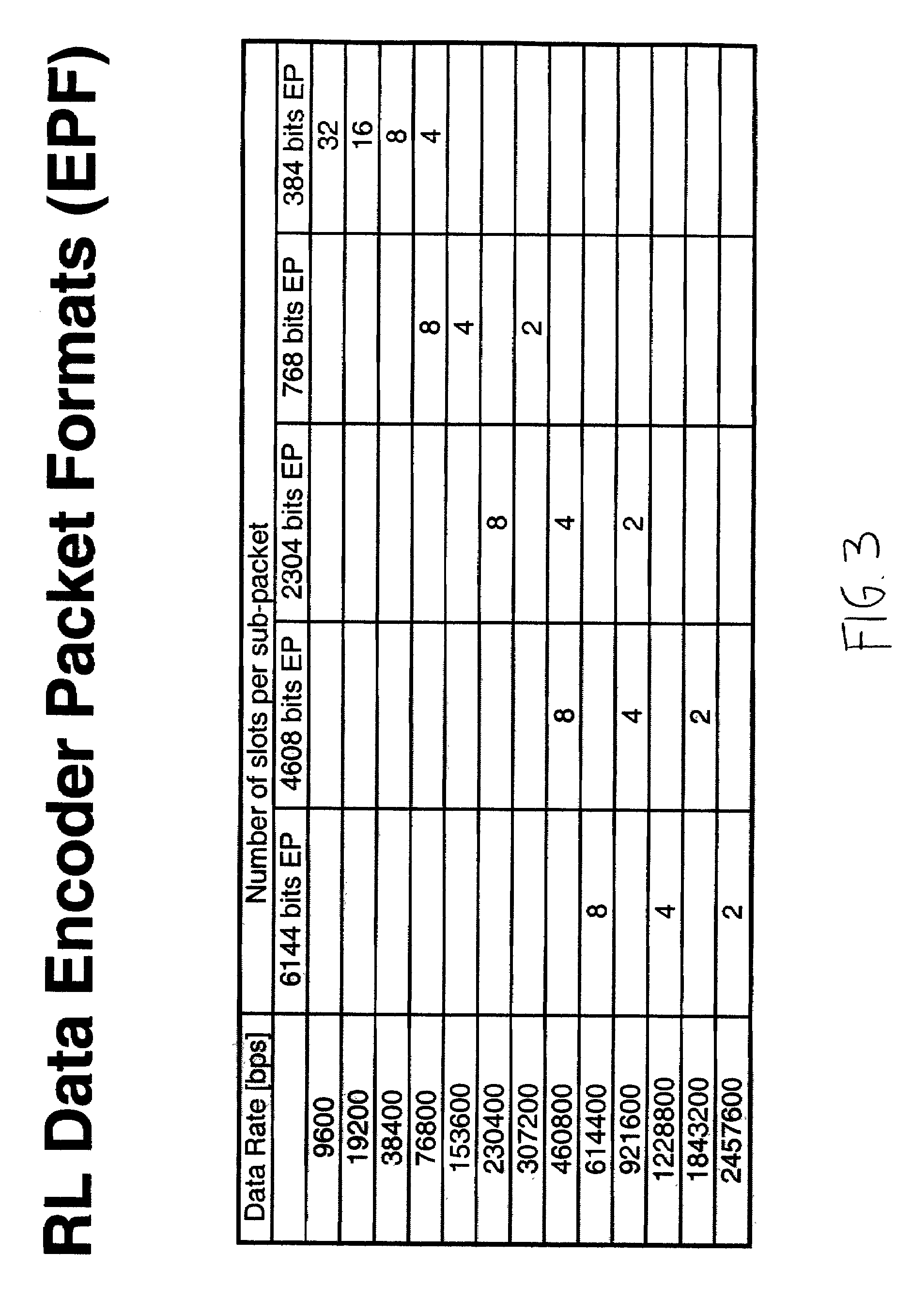Multiple mode data communication system and method and forward and/or reverse link control channel structure
- Summary
- Abstract
- Description
- Claims
- Application Information
AI Technical Summary
Benefits of technology
Problems solved by technology
Method used
Image
Examples
case 1
[0043] Scheduled Operation (Non-Handoff)
[0044]1. Wireless unit transmits the R-RUCH and the R-PRCH (buffer status and implied path loss to base station)
[0045]2. Base Station responds on the R-UCACH with an acknowledgement
[0046]3. Wireless unit continues to resend the R-PRCH at regular intervals
[0047]4. Base Station sends schedule grant to mobile at some subsequent time, on the F-USCH
[0048]5. Wireless unit transmits R-SCH (the actual data), R-HCCH, and the R-PRCH. The R-EPFICH is also sent if it cannot maintain the data format indicated by the base station on the F-USCH.
[0049]6. Base Station Acknowledges on the F-UCACH
[0050]7. Wireless unit waits for next schedule grant or sends R-RUCH with all zeros to indicate empty buffers (optional)
[0051]FIG. 6 shows a flow diagram of a case 1 embodiment of how the processing circuitry in a non-handoff wireless unit uses the control channel structure to operate using the multiple mode data communication system in a scheduling mode with a transiti...
case 1a
[0053] Scheduled Operation (Non-Handoff with Waiting Period Option Enabled)
[0054]1. Wireless unit transmits the R-RUCH and the R-PRCH (buffer status and implied path loss to base station)
[0055]2. Base Station responds on the R-UCACH with Waiting Period Indicator.
[0056]3. Wireless unit monitors F-USCH for scheduling information. During the waiting period, the R-PRCH is sent only when there is a significant improvement on the path loss. The R-PRCH is sent at the end of the waiting period if the mobile has not yet been scheduled.
[0057]4. Base Station sends schedule grant to wireless unit at some subsequent time, on the F-USCH.
[0058]5. Wireless unit transmits R-SCH (the actual data), R-HCCH, and the R-PRCH. The R-EPFICH is also sent if it cannot maintain the data format indicated by the base station on the F-USCH.
[0059]6. Base Station Acknowledges on the F-UCACH. Here the UCACH bit serve to acknowledge successful or unsuccessful reception of the user's data burst transmission.
[0060]7. W...
case 2
[0064] Maintaining Scheduling and Reception During Handoff
[0065]1. All wireless unit data bursts are accompanied by the R-EPFICH and R-HCCH. Thus all base stations in the active set know the format of the wireless unit's transmission and can decode it. This information is essential since none of the base stations can be certain apriori, as to the format and state (new or continued transmission) of the wireless unit's transmission.
[0066]2. The R-PRCH may or not be transmitted at regular intervals. If it is transmitted, the frequency of this transmission may be changed (lowered or set to zero) when the wireless unit in is handoff (via an upper layer message during data call setup).
[0067]3. Either one or all the base stations send the schedule grant to the wireless unit on their respective F-USCH and acknowledge the wireless unit's transmissions on their respective F-UCACH. If the schedule grants and acknowledgements are simultaneous, the wireless unit follows a rule to determine its t...
PUM
 Login to View More
Login to View More Abstract
Description
Claims
Application Information
 Login to View More
Login to View More - R&D
- Intellectual Property
- Life Sciences
- Materials
- Tech Scout
- Unparalleled Data Quality
- Higher Quality Content
- 60% Fewer Hallucinations
Browse by: Latest US Patents, China's latest patents, Technical Efficacy Thesaurus, Application Domain, Technology Topic, Popular Technical Reports.
© 2025 PatSnap. All rights reserved.Legal|Privacy policy|Modern Slavery Act Transparency Statement|Sitemap|About US| Contact US: help@patsnap.com



